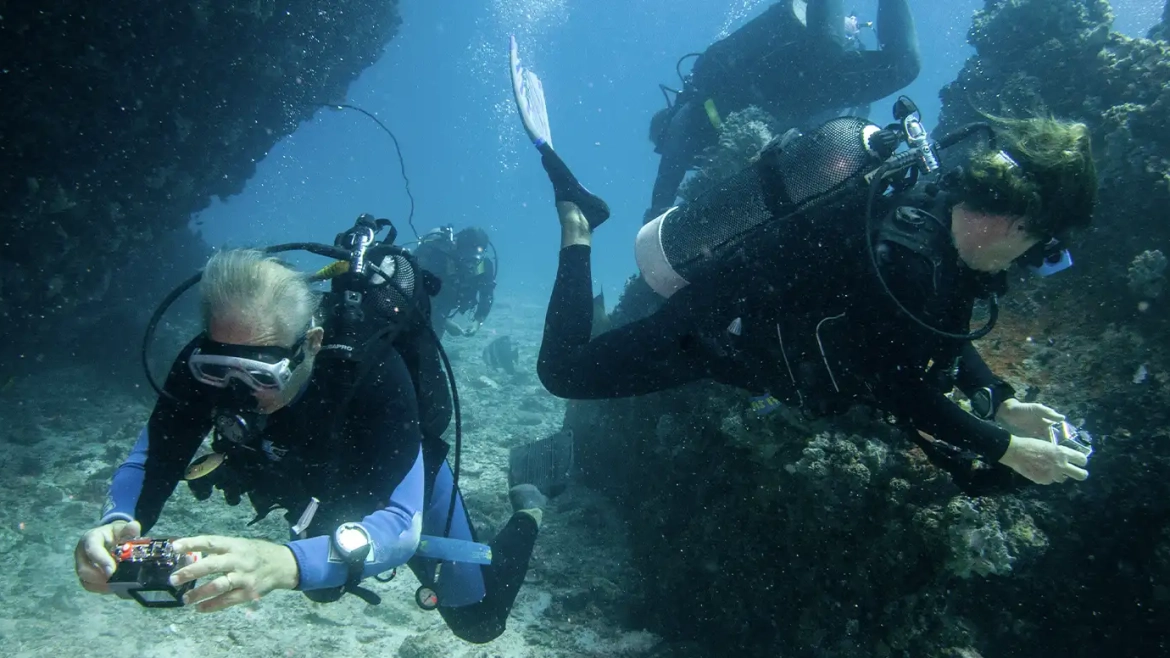Diving in Costa Rica is on every diver’s bucket list. Yet, planning a scuba diving trip to any destination you are not familiar with can take a lot of time and research.
There are many locations to dive in Costa Rica, with multiple dive sites having unique conditions and offering varied marine species.
Optimizing your vacation time and getting the best dive experience is important, and with no prior knowledge about Costa Rica diving, you may wonder where to begin. If that sounds familiar, this blog is for you.
At Bill Beard’s Costa Rica, we bring our years of experience, local knowledge, and passion for diving to provide the essential insights and tips you need.
Our comprehensive guide ensures you have the knowledge to plan your vacation so you can dive confidently and safely, making your trip as seamless and enjoyable as possible.
Is Costa Rica Good for Scuba Diving?
Costa Rica is a great place to scuba dive. The country offers an immense and diverse variety of marine life and unique underwater landscapes leading to some incredible dive sites.
Let’s start with Cocos Island, a UNESCO World Heritage site renowned for its incredible biodiversity and dramatic underwater landscapes. Here, you can swim with schools of hammerhead sharks!
Among the other remarkable spots along Costa Rica’s Pacific coast are the Bat Islands, known for their encounters with bull sharks, and the Catalina Islands, popular for their majestic giant manta rays.
Other worthwhile sites to explore are Tortuga Island, one of the few places in Costa Rica where you will find wreck diving and Caño Island Biological Reserve with rich marine biodiversity, and a wide variety of tropical fish.
Diving conditions are another reason why scuba divers keep choosing Costa Rica as their top choice. With lots of nutrients that attract pelagics, visibility can fluctuate between 20 and 100 feet.
You can spot whale sharks, whitetip reef sharks, manta rays, large schools of cownose and mobula rays, squads of eagle rays, spinner dolphins, sea turtles, humpback whales, and occasionally Orcas.
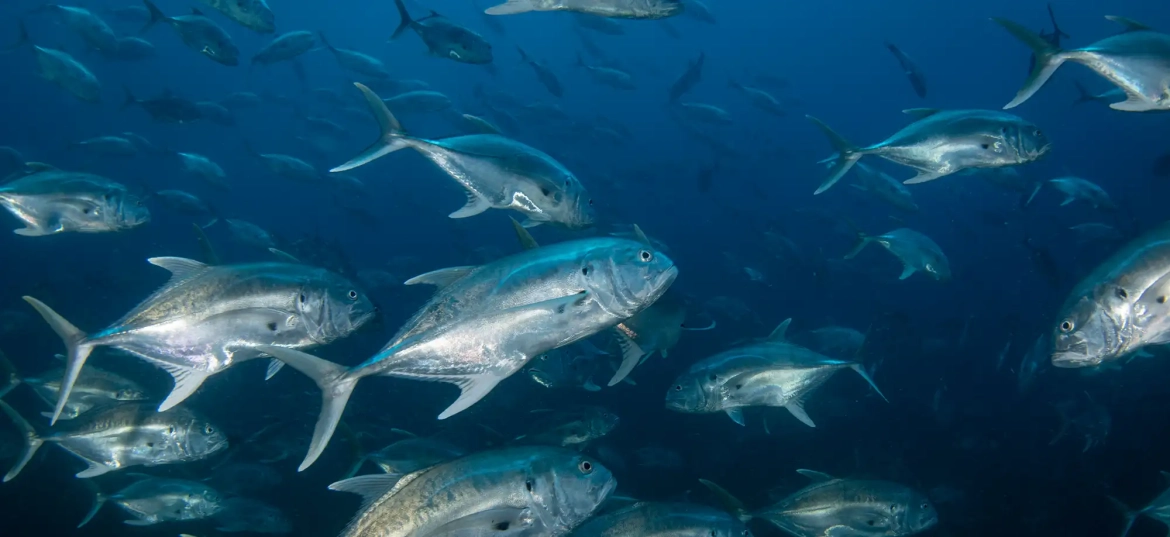
What Are the Travel Essentials for Visiting Costa Rica?
Check out the travel essentials you need for your diving trip:
Visa and entry requirements
The Costa Rican immigration department classifies countries into four groups, each with specific entry requirements. To find out your group and the rules you need to follow, take a look at our Costa Rica Entry Requirements article.
Currency
The official currency is the Costa Rican colón (CRC). Although some places accept US dollars, it’s best to use the local currency for small transactions and tips.
Weather conditions
Costa Rica experiences two distinct seasons: the dry season (December to April) and the rainy season (May to November).
Dry season: December to April
During the dry season, from December to April, you can dive in any region where diving is offered within Costa Rica. The topside weather during the dry season is windy, but there is absolutely no rainfall, so no rivers will drain into gulfs or bays, causing run-off that can muddy the waters.
One of two annual whale migrations occurs along the Pacific Coastline during the dry season. The best time to see them is from late January through late February.
The Northwest Pacific Coast is popular during the dry season, particularly in the Guanacaste region. Here, the Catalinas Islands, a cleaning station for Giant Pacific Mantas, are a great place for divers wanting to see one of these majestic creatures.
Moreover, polar currents bring mantas and mind-blowing herds of cow-nose and mobula rays that can fill the ocean from surface to floor as these enormous groups pass through.
This is the best time of year to dive at Isla del Cano in the Osa Peninsula on the Southwest Pacific Coast. All resorts are open and offer the best opportunity to see humpback whales.
For those who prefer to snorkel, the Southern Atlantic Coast has the only hard coral reef in Costa Rica. Snorkeling in Cahuita National Park provides the best spot to snorkel on the Caribbean Coast. With protected sites yet to be fully explored, these vibrant Caribbean reefs host a variety of tropical marine life, providing a perfect playground for snorkelers.
Divers headed to Isla del Coco—the Cocos Islands—during the dry season will find the crossing to have a few more troughs and rollers than they would experience during the rainy season voyage.
Whether you’re a beginner or an experienced pro, Costa Rica’s dry season provides opportunities for all divers to dive throughout the entire country. The water will be much cooler and the surface a little choppier due to winds, but you will have no rain and no rivers draining..
Rainy Season: May to November
This is a wonderful time to visit Costa Rica. It is important to know that it doesn’t rain all the time during this time! During most of the rainy season, there are only light sprinkles or short shower bursts in the late afternoon.
The rainy season is also when the second annual migration of humpback whales occurs. These graceful creatures come to breed and give birth to calves from mid-July through September along the Pacific Coast.
The rainy season is the best time for advanced divers to experience high-voltage dive sites at the Cocos Islands and Guanacaste’s Bat Islands. The chance to encounter majestic marine life like the thrilling bull shark dive site “Big Scare” at the Bat Islands, and schooling Hammerheads at Isla del Coco are best visited in the rainy season when water is warm and seas are calm making the open water passage easier.
Cocos Islands dive sites are consistently one of the top three dive destinations worldwide. This renowned mecca for liveaboard scuba diving vacations is a gathering place for large pelagic species, including schools of hammerheads, stacks of marble rays, whale sharks, manta rays, and much more.
And bonus!—You will find the crossing much easier during the rainy season with much flatter, calmer water for the journey from Puntarenas.
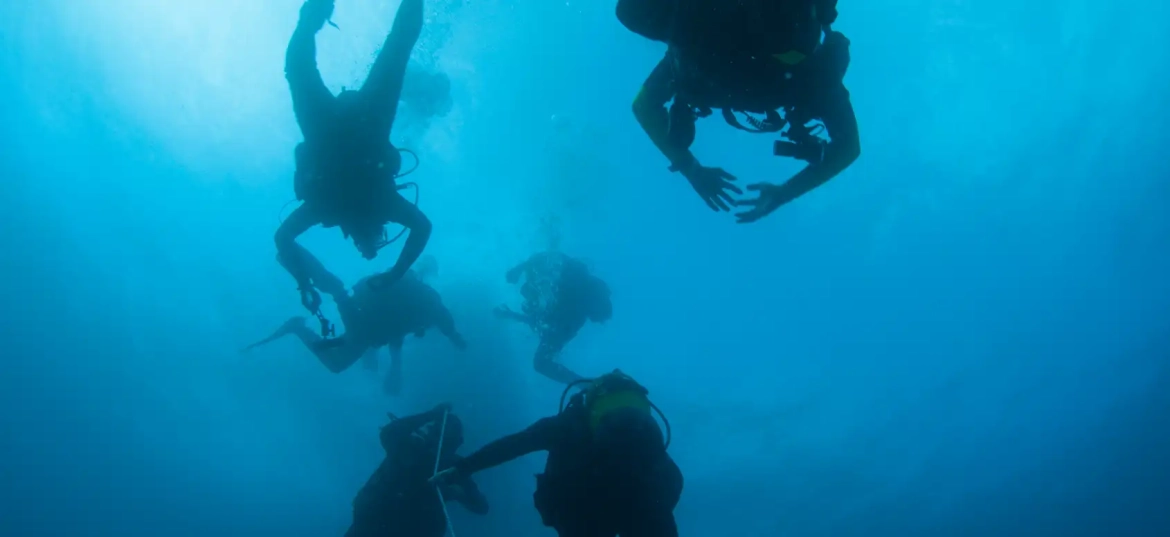
How to Get Around In Costa Rica
Costa Rica is easily accessible through two international airports: Juan Santamaria International Airport (SJO) and Daniel Oduber Quiros International Airport (LIR).
If diving at the Cocos Islands, Cano Island or Tortuga, fly into SJO. But, if you are diving in the Gulf of Papagayo, the Catalina Islands or the Bat Islands along Guanacaste’s Pacific NW Coast, you should fly into LIR.
But when you arrive in the country, here’s how you can get around:
Private shuttles
Private shuttles offer direct airport pick-up and can drop off at various accommodations, including vacation rentals. They include one stop along the way for convenience and can accommodate custom stops for an additional fee. Please note that rates may vary based on the number of passengers.
Rental car
With a rental car, you have the freedom to choose your destinations, departure times, and travel itinerary, ensuring a truly adventurous trip.
As a foreigner, you’ll need your original passport, a valid tourist visa stamp, and a valid original driver’s license from your home country to drive in Costa Rica.
Americans and Canadians can use their home country’s driver’s licenses without needing an international driver’s license. However, the minimum age to rent a car typically ranges from 21 to 25.
Public transportation
Costa Rica’s public bus system offers an affordable and accessible way to travel around the country, particularly to reach popular tourist destinations.
However, bus travel may take longer, so it’s essential to plan by researching schedules and remaining vigilant during the journey to ensure a safe and enjoyable experience.
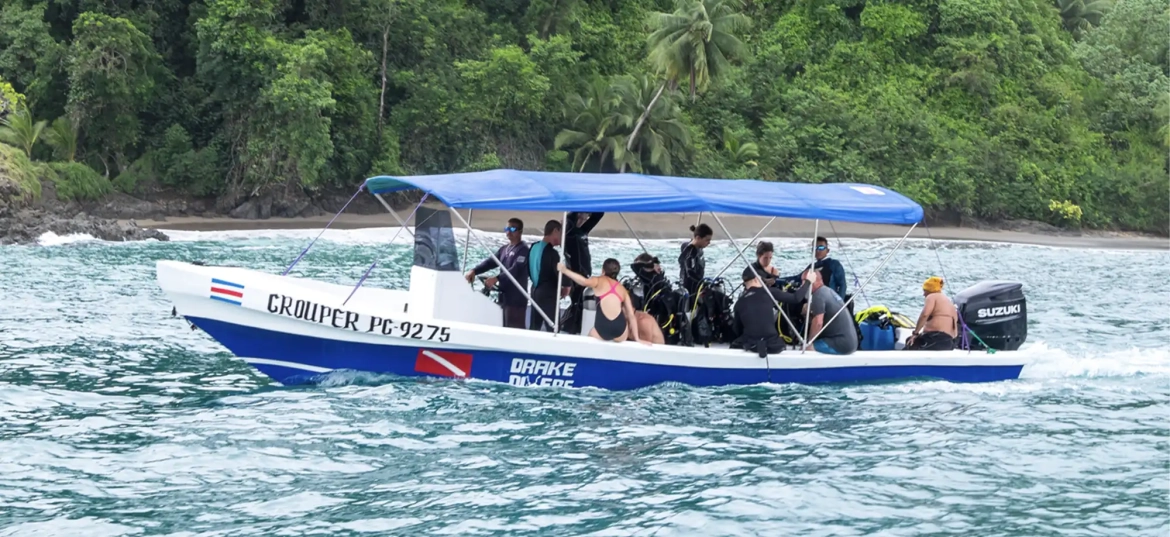
What is the Best Season to Dive in Costa Rica?
The best season to dive in Costa Rica depends on your experience level and what kind of underwater experience you seek.
During the rainy season, you can expect one to two hours of rainfall in the mid-afternoon. This period is ideal for advanced divers who enjoy pelagic activities because the nutrient-rich waters can enhance marine life sightings.
From August to December, you’ll find little wind and calm seas, making it the best time for novice divers who prefer easy dive conditions and warm water. During these months, the pelagic species found during the rainy season leave Costa Rica’s coast and are replaced by various fish and macro species.

What to Consider for Your Dive Trip
These are some of the things to consider before embarking on your diving adventure:
Choosing the dive site
Selecting the right dive site in Costa Rica should be based on your diving skill level and interests. For instance, if you’re a beginner, consider diving in the Gulf of Papagayo’s protected bay. Guanacaste’s dive site’s Punta Gorda, Tortuga and Escorpiones provide divers calm waters, easy entry points, and shallow depths.
You can observe colorful marine life, including tropical fish and coral formations, while gaining confidence in your diving skills.
For advanced divers, we recommend Cocos Islands if you have the time. The shortest liveaboard dive trip for this phenomenal, once-in-a-lifetime experience is 10 days, and you should plan a day pre-voyage to ensure you have time to deal with delayed flights or baggage issues.
The Bat Islands are also recommended for Advanced open-water divers due to potentially strong currents and depths exceeding 100 feet (30 meters).
Divers of all experience levels can enjoy the Catalina Islands, where you can see giant Pacific mantas, spotted eagle rays, devil rays, turtles, and tropical fish. Keep in mind that during the dry season (December to April) there will be surface chop, cooler water temps and surge.
Gear and equipment
Dive gear ensures your safety and comfort underwater. As such, you should bring:
- BC/BCD
- Booties/fins
- Dive computer
- Exposure suit
- Gear bag
- Gloves
- Hood
- Lights
- Mask
- Regulator
- Snorkel
- Surface signal
- Whistle
- Cutting tool or dive knife
You can rent or bring your own gear based on your familiarity and preference.
Insurance
Travel insurance safeguards your investment by reimbursing non-refundable expenses in the event of trip cancellations or interruptions.
Comprehensive dive insurance policies provide essential medical coverage for diving-related injuries, including hyperbaric chamber treatment and emergency evacuation. All divers should have dive insurance, which we can offer for daily dives or multiple dive-day vacations.
Additionally, insurance may cover lost, stolen, or damaged diving equipment and offer liability protection against third-party claims.
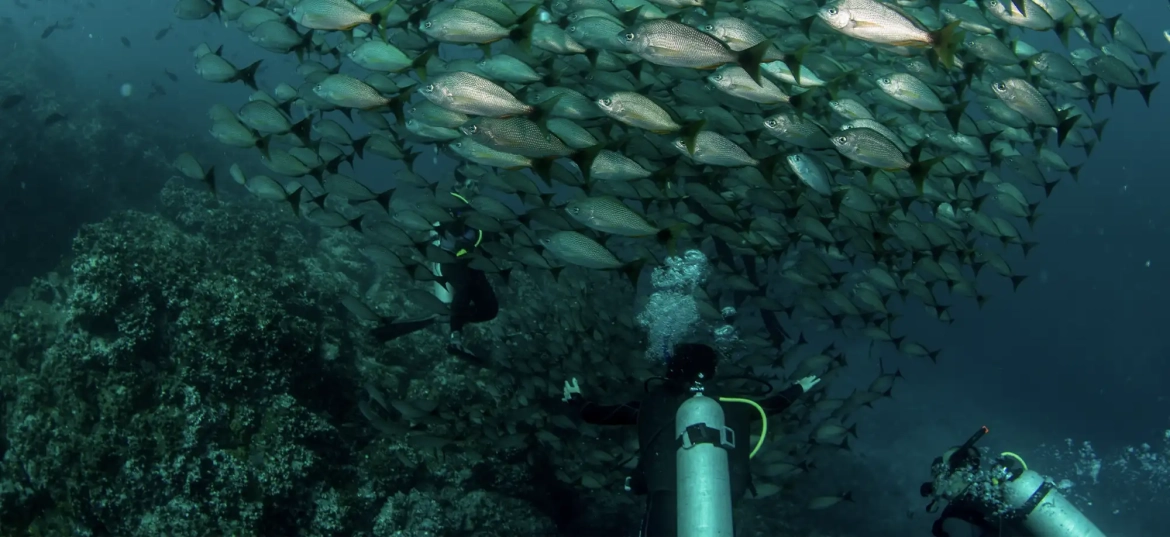
Do You Need to Be Certified to Scuba Dive in Costa Rica?
Yes, you need to be certified to scuba dive in Costa Rica, and you must show proof of certification and sign specific trip waivers.
It is easy to get certified in Guanacaste! You’ll find a variety of courses available, including beginner-level courses like Discover Scuba Diving and Open Water Diver. Also available are advanced certifications such as Advanced Open Water Diver, Rescue Diver, Divemaster, and Scuba Instructor.
You can choose the right one for you depending on the amount of time you have and the region of the country you intend to visit.
How Much Does It Cost to Go Diving in Costa Rica?
Diving costs vary based on location, operator, and included amenities. Single dives typically range from $50 to $150, while certification courses range from $300 to $600. Liveaboard expeditions can cost several thousand dollars.
At Bill Beard’s Costa Rica, we offer diverse diving packages for 7-night stays, with prices ranging from $1,894 to $3,843 per person, depending on the season and occupancy.
Planning Your Costa Rica Dive? Let Bill Beard’s Costa Rica Guide You!
Before setting out on your Costa Rica scuba diving adventure, it’s crucial to be well-prepared. At Bill Beard’s Costa Rica, we specialize in organizing dive trips tailored to your preferences and skill level.
With our expertise and commitment to exceptional service, you’ll have a seamless and unforgettable diving experience—and we charge nothing for our concierge services to help you make the most of your valuable vacation time or our 24-hour in-country emergency contact line. Contact our team at Bill Beard’s Costa Rica now to book your dive trip and explore the extraordinary underwater world of Costa Rica with confidence. Plan your next adventure today!
Stay connected:
- Direct: 954-453-5044
- Fax: 321-400-1404
- Toll-free: 877-853-0538
- Local number (Costa Rica): 2479-7089 (Available from 9-5 PM)
- Office hours: 8-6 CST M-F & Sat 9-5 CST
- Email: agent@billbeardcostarica.com

